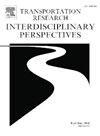交通影响分析应用中的重复模式:安全第一还是最后?
IF 3.9
Q2 TRANSPORTATION
Transportation Research Interdisciplinary Perspectives
Pub Date : 2025-05-01
DOI:10.1016/j.trip.2025.101445
引用次数: 0
摘要
传统的交通影响分析(TIA)在开发审查过程中忽略了交通安全,通常作为事后考虑,因为产生的交通比主动解决和预测安全问题更容易衡量。为了进一步探讨TIA忽视问题,对美国大西洋中部和东南部五个州的TIA从业人员和开发人员进行了采访,探讨这些专业人员是否以及如何将道路使用者安全考虑纳入其TIA实践。虽然TIA的手段和目的是可量化的,但了解安全在TIA过程中可能发挥的作用需要定性分析。根据编码访谈结果、交通拥堵、安全和诱导出行需求之间关系的文献,通过系统原型的视角,使用因果循环图进行定性分析,强调了交通安全和传统TIA实践之间复杂而流畅的相互作用。这些实践遵循两个相互关联的系统原型——在系统中产生既定行为模式的问题引起结构的一般表示——识别潜在的点,将道路使用者安全首先整合到TIA实践中,而不是在TIA过程中最后整合。结果通过明确地纳入安全性来增强TIA实践,但总体方法在依赖TIA从业者和开发人员对TIA程序的定性表述而不是对TIA输出和结果的定量分析方面受到限制。本文章由计算机程序翻译,如有差异,请以英文原文为准。
Recurrent patterns in the application of traffic impact analyses: Safety first or last?
Conventional traffic impact analysis (TIA) neglects traffic safety in development review procedures, often serving as an afterthought because the traffic generated is easier to measure than proactively addressing and predicting safety issues. To explore this TIA neglect issue further, interviews conducted with TIA practitioners and developers in five US Mid-Atlantic and Southeast states explore whether and how these professionals incorporated road user safety considerations into their TIA practices. While the means and ends of TIA are quantifiable, understanding the possible role that safety plays in the TIA process requires qualitative analysis. Drawing upon coded interview findings, literature on relationships among traffic congestion, safety, and induced travel demand, qualitative analysis using causal loop diagramming highlights the complex yet fluid interplay between traffic safety and conventional TIA practices through the lens of system archetypes. These practices adhered to two interrelated systems archetypes—generic representations of problem-causing structures that produce established patterns of behavior in a system— discerning potential points to integrate road user safety into TIA practice first as opposed to last in the TIA process. The results enhance TIA practice by explicitly incorporating safety, yet the overall approach is limited in its reliance on the qualitative articulations of TIA practitioners and developers about TIA procedures rather than quantitative analysis of TIA outputs and outcomes.
求助全文
通过发布文献求助,成功后即可免费获取论文全文。
去求助
来源期刊

Transportation Research Interdisciplinary Perspectives
Engineering-Automotive Engineering
CiteScore
12.90
自引率
0.00%
发文量
185
审稿时长
22 weeks
 求助内容:
求助内容: 应助结果提醒方式:
应助结果提醒方式:


